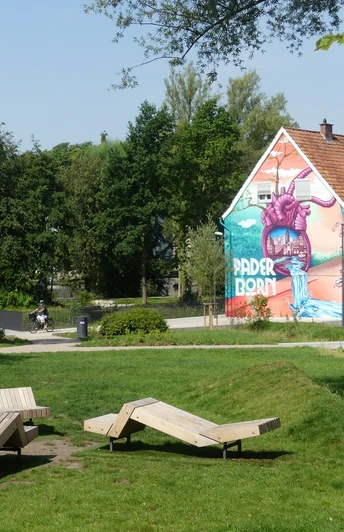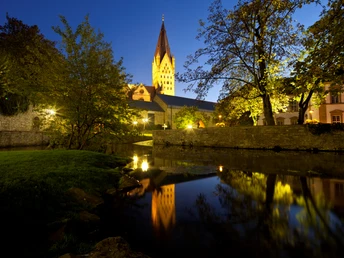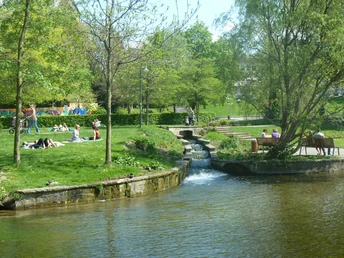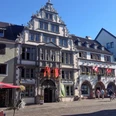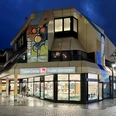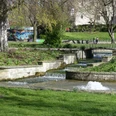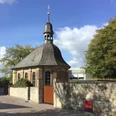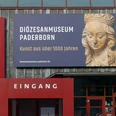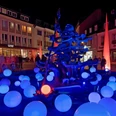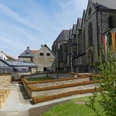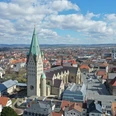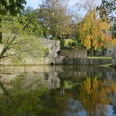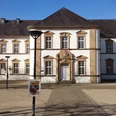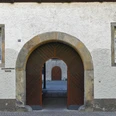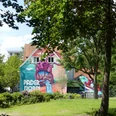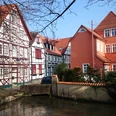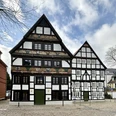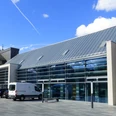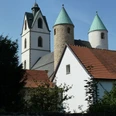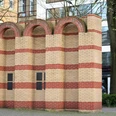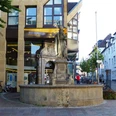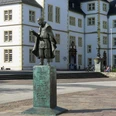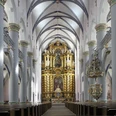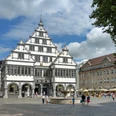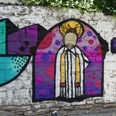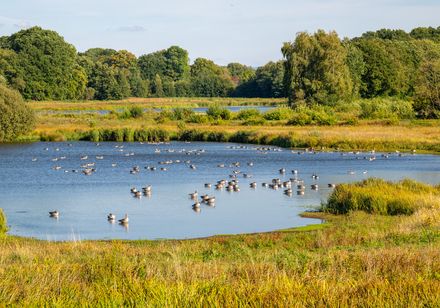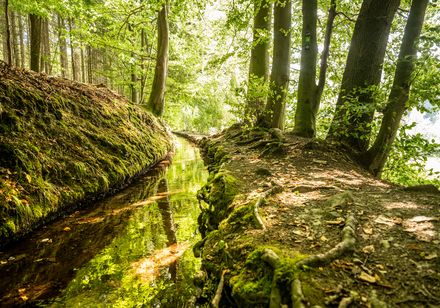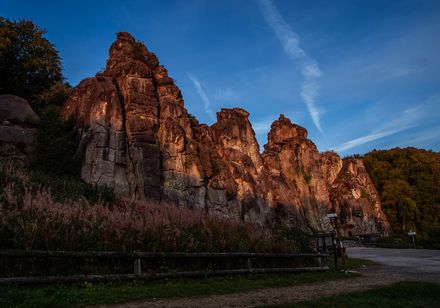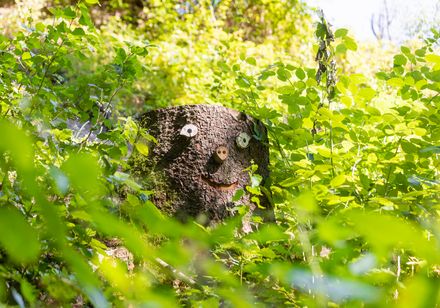- 2:00 h
- 3.12 km
- 25 m
- 24 m
- 109 m
- 124 m
- 15 m
- Start: Tourist Information, Marienplatz, Paderborn
- Destination: Historic town hall, Paderborn
We invite you to get to know Paderborn a little better: a young city with over 1,200 years of history and a diversity that speaks for itself. Experience the vibrant life of a traditional and modern, yet still manageable city.
The university city offers a high quality of leisure and life. Green spaces within the city and varied landscapes in the surrounding area offer peace, relaxation and leisure enjoyment.
Culture plays an important role in the Paderstadt. The PaderHalle, the Paderborn Theater, the university's studio stage and the Kulturwerkstatt are just some of the venues for culture and entertainment. Numerous festivals throughout the year ensure that there is always something going on.
Thanks to the sights from all important art-historical epochs. This makes a tour of Paderborn a walk through the centuries. You can get to know the most important ones on our historical city tour.
Waypoints
Good to know
Pavements
Best to visit
Directions
The Mary's Column from 1861 forms the focal point of Marienplatz, with a statue of the Virgin Mary at the top. In the niches you can see figures of St. Liborius, St. Meinolfus, Charlemagne and Henry II, who play prominent roles in the city's history.
Follow the road to the right of the Marian column downhill and turn right into Abdinghof. After a few meters, you will see the Abdinghofkirche with its Romanesque twin towers. The church, a pillar basilica with a flat ceiling and three-aisled crypt, was consecrated as a Protestant church in 1871 and is one of the successor buildings to the Benedictine monastery church of St. Peter and Paul, which was built by Bishop Meinwerk and consecrated in 1031. The town hall was built after the Second World War partly on the foundations of the monastery complex, which was badly damaged in 1945 and subsequently demolished. It houses part of the city administration and the Paderborn City Museum. Here, the history of the Paderstadt from the first settlement in prehistoric and early historical times to topics of the urban present and future are explained in an impressive way.
At the foot of the Abdinghof church lies the western part of the Paderquellgebiet with three of the six main arms of the Pader: Börne-, Damm- and Warme Pader. The Pader rises in three spring areas, one in the west, one in the middle and one in the east, in the middle of the city from 200 springs. They produce an average of 5,000 liters of water per second. This makes these springs some of the richest in water in Germany. The Pader spring area is Paderborn's "green lung" in the immediate vicinity of the pedestrian zone and invites you to relax and unwind. The park is now a protected garden monument from the 1950s.
The former Brauhaus is located on Bachstraße on the edge of the western Paderquell area. It was built in 1563 and catches the eye with its late Gothic gable front with half-wheels and its ogival latticework portal. Today, a hotel and a café-restaurant occupy the building. On the other side of the park is the functional model of the Wasserkunst built in 2017. It demonstrates the city's water supply in earlier centuries.
Follow the street Am Abdinghof, which turns sharply to the right in front of the church towers, to the wall on the left-hand side of the street. This marks the site of St. Michael's Monastery. Behind it towers the Alexius Chapel . In its existing form, it dates from 1670 to 1673, while the extension to the west dates from 1729. The decorative alternation of sandstone and brick as well as the ornate iron grilles are remarkable features of today's building.
The street Am Abdinghof leads you directly to the mighty cathedral tower. Keep right there and walk towards the market square. The corner building on your right is the baroque Fürstenhof from the early 18th century. Franz Egon von Fürstenberg (1737-1825), the last prince-bishop of Paderborn before secularization in 1802, resided here.
The Neptune Fountain, created in 1977/79 by Paderborn artist Josef Rikus to replace the historic "Kump" with the sea god Neptune, which was destroyed here in 1945, forms the center of the market square.
The most striking building on the market square is the Diocesan Museum, a building clad in lead panels designed by the well-known architect Gottfried Böhm in 1975. It is intended to symbolize a medieval reliquary and deliberately represents a counterpoint to the architecture of the cathedral.
On the other side of the market square stands the medieval Gaukirche St. Ulrich, a Romanesque basilica with an octagonal tower, which was probably built around 1180. The magnificent baroque façade facing the market square with the figure of the church patron was created by Franz Christoph Nagel between 1746 and 1749.
Now head towards the cathedral, but take a look at houses no. 8 (built in 1833 for the merchant Witten) and 6 (the former Cramer court pharmacy) as well as the Gleseker House, the home of the wine merchant and prince-bishop's treasury collector Gleseker, built in 1779, to the left of the Baroque portal of the Gaukirche.
Before you enter the Dom through the Paradise Portal, look at the gable wall of the eastern transept on the right. There you will see two relief friezes. One shows scenes from the life of Jesus, the other the parable of the foolish and wise virgins (Matthew 25:1-13).
The lavishly decorated, late Romanesque portal to paradise is lined on the left and right by rows of statues, each with three apostles. On the left-hand side, Peter (with curly hair) and James the Elder (with a shell) can be identified. On the right are Paul (with a high forehead) and John (without a beard). Also depicted are a bishop - probably Julian of Le Mans, who was bishop there before Liborius - and St. Catherine of Alexandria. On the central pillar is "Mary with the child caressing her", the cathedral's first patron saint. At her side you can see Bishop Liborius (with book) and St. Kilian.
The Cathedral of St. Mary, St. Liborius and St. Kilian is essentially a 13th century building. Parts of the previous buildings from the 11th and 12th centuries were incorporated into the successor building. Later additions and alterations, especially the Baroque style in the 17th century, did not significantly change the overall Gothic impression. The 104-metre-long, three-nave hall church has two transepts. The massive west tower from the 13th century measures 92 meters.
One of the special sights inside the cathedral is the Pietà (around 1380), the Gothic high altar (late 15th century), the double Madonna (around 1480) and the Régence-style pulpit (1736).
An eye-catcher is the massive tomb monument of Paderborn Bishop Dietrich IV von Fürstenberg (1585-1618). The bishop himself commissioned the 14-metre-high work made of slate, alabaster, marble and sandstone from the Paderborn sculptor Heinrich Gröninger during his lifetime.
When you head towards the altar, you will come to two staircases on the left and right opposite each other that lead into the crypt. At 32 meters long and over 12 meters wide, the cathedral crypt is one of the largest choir crypts in Germany. It houses the relics of St. Liborius in an ebony box at the foot of the altar. From the crypt, you enter the bishop's crypt, which was created in 1935.
Past the left-hand staircase to the crypt, a door leads under a large sandstone figure of St. Christopher - also created by Heinrich Gröninger - into the atrium and on into the cloister of the former cathedral monastery. In the inner courtyard you can see the famous Three Rabbit Window from the early 16th century, one of Paderborn's landmarks. It is accompanied by this saying: "The hare and the spoon three, and yet each hare has two".
If you return to the cloister, you will see a door opposite the "stone face". Legend has it that anyone who is not pure of heart and puts their hand in the mouth of the face will have it bitten off.
Once you have left the cathedral cloister through the aforementioned door, you will come to the Bartholomew Chapel. It is considered the oldest hall church north of the Alps and was probably built as a royal chapel by Greek builders in 1017 on the orders of Bishop Meinwerk. Inside, there are column capitals as significant evidence of Ottonian architectural sculpture. The Bartholomew Chapel astounds with its extraordinary acoustics.
Directly next to the Bartholomew Chapel and 'behind' the cathedral is the Ottonian-Salic Kaiserpfalz from the 11th century. The museum in the imperial palace is located here. The 44-metre-long and 16-metre-wide hall building and several smaller outbuildings were rebuilt between 1976 and 1978 on the old foundation walls while preserving the original masonry as much as possible (recognizable by the lighter stone).
The foundation walls of the former hall building and several outbuildings have been preserved from the palace where Charlemagne held the first Frankish imperial assembly on Saxon soil in 777. Further remains of the walls can be seen under the staircase to the cathedral's "Red Gate".
Now walk to the back of St. Bartholomew's Chapel and then turn left past two former fountains and down into the eastern Paderquell area. Ahead you will see the former Domdechanei in Geißel's Garden. Enter the garden through the archway. The cathedral deanery is the oldest Baroque secular building in Paderborn. Master builder Ambrosius von Oelde erected it in the last quarter of the 17th century. The eastern staircase extension dates back to 1740. The façade of the building, which was burnt out in 1945, was restored in the 1970s. As a "building under construction", a transparent, self-supporting storey was placed in the baroque housing for the new city library - a solution that attracted a lot of attention at the time in terms of monument preservation.
Continue your tour past the city library through the Geißel's Garden. The protected 'island', which was artificially created in the Middle Ages, is surrounded by the arms of the Rothobornpader and Dielenpader rivers. On the other side of the Rothobornpader is Michaelstraße, where the Michaelskloster monastery is located. The lavishly decorated façade of Michaelskirche is well worth seeing. It was built according to the plans of the Capuchin monk and cathedral architect Ambrosius von Oelde in the Dutch style using alternating sandstone and brick. The building adjoining the church has housed the St. Michael schools since 1658 (a girls' grammar school since 1949 and a private secondary school since 1950).
Leaving Geißelscher Garten, you come to Mühlenstraße. Around 20 grain, oil, fulling, grinding and saw mills were powered by the Pader in pre-industrial times. Today, only the Reinecke mill from 1958 still grinds grain; it has long been powered by electricity. Through a large archway, you can take a look at the middle Pader spring area, where the large Paderborn heart graffiti can be seen and the Maspernpader springs near the PaderHalle.
From Mühlenstraße, turn right into Auf den Dielen. A wooden footbridge used to run along the houses here over the Dielenpader. Worth seeing are some carefully restored half-timbered houses, which today represent the "old" Paderborn after fires and the ravages of war. Turn left at the end of the street. After a few steps along Hathumarstraße, you will reach the Adam-und-Eva-Haus , Paderborn's oldest preserved and most beautiful half-timbered house from the mid-16th century. The ornate figurative carvings and paintings on the façade are eye-catching. It got its name from the depiction of the expulsion of Adam and Eve from paradise.
Continuing along Hathumarstraße, you come back to Mühlenstraße. The Paderborn Sagenturm has stood in front of the Sparkasse building on the other side of the crossroads since 1989. The artist Werner Klenk has depicted five prominent Paderborn legends and explained them with short texts.
Walk back to the Adam-und-Eva-Haus and then through Krämerstraße to Heiersstraße, which you follow to the right. After about 80 meters, the street An den Kapuzinern branches off to the left.
Turn into the street An den Kapuzinern, which leads directly to the Kapuzinerkirche . Built between 1681 and 1683 by Ambrosius von Oelde as a foundation of Bishop Ferdinand von Fürstenberg, it was the church of the Capuchin monastery founded in 1612 and dissolved in 1834. Today, the Liborianum, an educational center and guest house of the Archdiocese of Paderborn, is located in the former monastery buildings.
If you continue along the street An den Kapuzinern, you will come to the street Am Stadelhof. On your left, you will see the slate-panelled front of a half-timbered house, which is home to the media center of the Archdiocese of Paderborn. Before keeping right here, take a look straight ahead into Badengasse. It is lined on the right-hand side by an ensemble of three restored, subsequently connected historic buildings: a clinker brick building with a farm building from 1851 and a double half-timbered house from 1731. The Paderborn Adult Education Center moved in here in 2014.
Turn back onto Am Stadelhof and keep right. You will come out at Giersstraße, where you continue to the left until you reach the inner city ring road. This is where the Gierstor, one of Paderborn's five city gates, once stood. Cross Giersstraße at the pedestrian lights and continue your tour uphill on the cycle and footpath along the ring road, which is called Busdorfwall here. You are now in the area of the former wall, which was in front of the city wall. On the right-hand side, you will see two magnificent half-timbered houses on the remains of the former wall, pass the memorial designed by Paderborn artist Josef Rikus to commemorate the dead of the two world wars (1953) and finally reach the towers of the Busdorfkirche church.
Take the path that branches off to the right. It is worth taking a look at the side streets: here you will find the Graffitimauer "Busdorf-Galerie", where regionally renowned graffiti artists have immortalized themselves. Continue until you reach a staircase. They lead down into the cloister ("Pürting") of the Busdorf Church, which is well worth seeing. It was built around 1180 with columns facing the inner courtyard. In the three-aisled hall of the church (late 13th century), a seven-branched Romanesque chandelier, a wooden crucifix (around 1280), a late Gothic sacrament house and a baptismal font from the same period as well as epitaphs from the 15th to 18th centuries are on display.
On the north side of the Busdorf church, opposite the Hotel Aspethera, is the Hardehauser Hof, the former town quarters of the Cistercian abbey of Hardehausen built in 1734 by Franz Christoph Nagel, which today serves as a retirement home. Follow the street Am Busdorf past the motherhouse of the Sisters of Charity of St. Vincent de Paul (1857) and St. Vincent Hospital to Kasseler Straße. On the right on the square An der Alten Synagoge, stop at the Jewish memorial. It commemorates the synagogue that was destroyed in 1938 during the Reichspogromnacht and the Jewish community that was wiped out.
Follow Kasseler Straße to the left until you reach the junction with Kamp. Turn right here. The baroque corner building is the Erzbischöfliches Palais. This early work by the great Westphalian Baroque architect Johann Conrad Schlaun from 1716 served as a town residence for the abbots of the Augustinian monastery of Dalheim. Since 1829, it has been the residence of the Paderborn bishops and (since 1929) archbishops.
Passing the modern Libori-Galerie shopping center and the former Posthof hotel built around 1725, now the headquarters of the Bonifatiuswerk der deutschen Katholiken, you will reach the Libori-Kump, which was built in 1586 and transformed into a fountain in 1894. The Libori-Kump is one of three surviving water reservoirs that provided drinking and fire-fighting water until 1888.
A hundred meters further on towards the town hall are the Gymnasium Theodorianum and the Faculty of Theology, the legal successor to the Jesuit University founded in 1614. Noteworthy features of the building complex are the tower dome, reconstructed in 1976, and the Renaissance portals. At the edge of the schoolyard on the Kamp, you can see a four-century-old Mary figure, which found its place here in 1954 after several relocations.
At the opposite side of the Theodorianum courtyard, in front of the Bank for Church and Caritas - where the renowned Hotel Löffelmann welcomed its guests until its destruction in 1945 - is a sculpture of the Jesuit priest and scholar Friedrich Spee von Langenfeld (1591-1635), who taught logic, physics, metaphysics and moral theology at the Jesuit University of Paderborn. He became famous as the author of the "Cautio Criminalis" (1631), his fiery appeal against the witch craze and the witch trials accompanied by cruel torture. Friedrich von Spee also made a name for himself as a Baroque poet.
Today's Market Church and former Jesuit Church are adjacent to the Theodorianum. Alongside the Jesuit Church in Cologne, it is the most important place of worship of this order in north-west Germany. As a foundation of Prince-Bishop Ferdinand von Fürstenberg, it was built in honor of St. Francis Xavier - a co-founder of the Jesuit order - by Anton Hülse between 1682 and 1692. Renovated in 1996, the interior of the Jesuit church is a basilica with galleries. The construction is Gothic, the furnishings predominantly Baroque. The magnificent high altar, a reconstruction of the original, which was completely destroyed in the war, was completed in 2004 after 15 years.
In front of the staircase to the courtyard of the Marktkirche, Bronze sculpture of the city center "Paderborn to see and feel", created by Paderborn artist Bernd Cassau, has stood since 2003. Around 20 buildings in the city center are sculpturally reproduced on a two-part plate, grouped to scale and provided with brief information in Braille.
Your tour continues to the town hall square. This widens between the town hall and the former Steinberg & Grünebaum department store to form New Square. A labyrinthine maze of old or post-war makeshift buildings was demolished and transformed into a meeting place in the heart of the Paderstadt by 2011. The Theater Paderborn is located on Neuer Platz. It opened its doors for the first time in September 2011.
Tour information
Familiy-Friendly
Loop Road
Stop at an Inn
Equipment
Directions & Parking facilities
Parking for cars is available at Maspernplatz on the edge of Paderborn city center (navigation destination address: Heiersmauer 45, 33098 Paderborn). There are usually plenty of parking spaces there. Tip: Buy a reasonably priced day ticket!
An alternative is the Neuhäuser Tor multi-storey parking lot, which you will pass on the way to Maspernplatz described above.
Information on other parking options in the city center and tariffs: www.asp-paderborn.de.
Further information on how to get there by city bus is available at www.padersprinter.de or by telephone on 05251 6997222.
Additional information
Königsplatz 10
33098 Paderborn
Tel. 05251 8812980
tourist-info@paderborn.de
www.paderborn.de
www.facebook.com/paderborn.tourismus
Literature
Pocketbook "Sightseeing Paderborn - Tour guides present their city" with detailed information on the most important sights of the Paderborn city (124 pages). Available for €10.00 from Paderborn Tourist Information, bookshops (ISBN: 978-3-9809507-9-4) and - free of charge - from HEFT-Zeitschriftenverlag (Tel. 05251 62624, mail@heft.de).
License (master data)
Author´s Tip / Recommendation of the author
